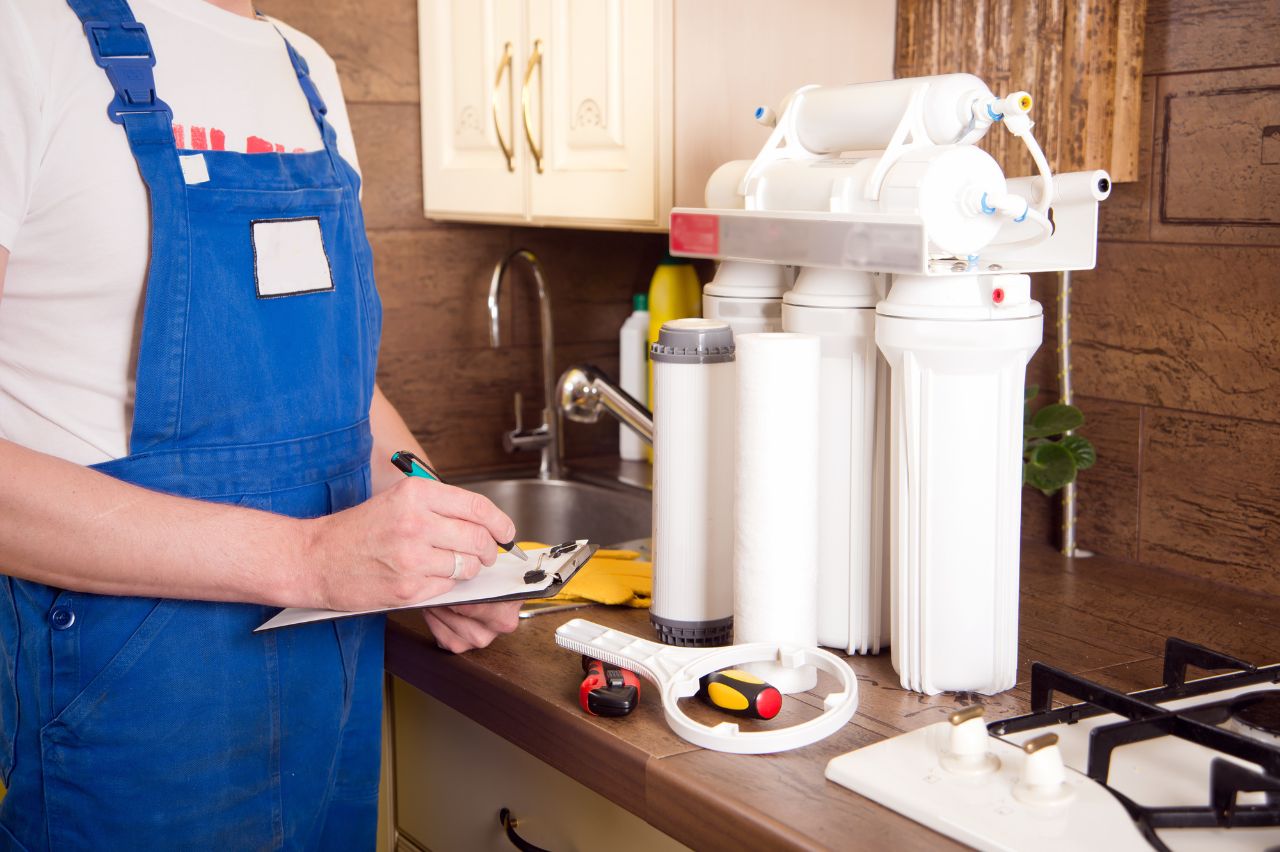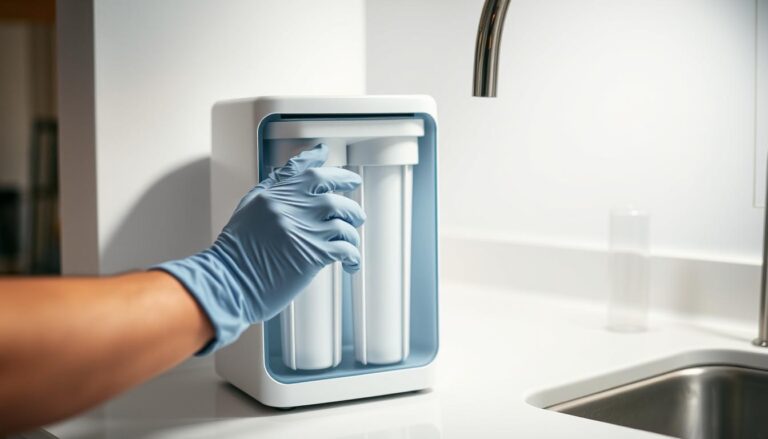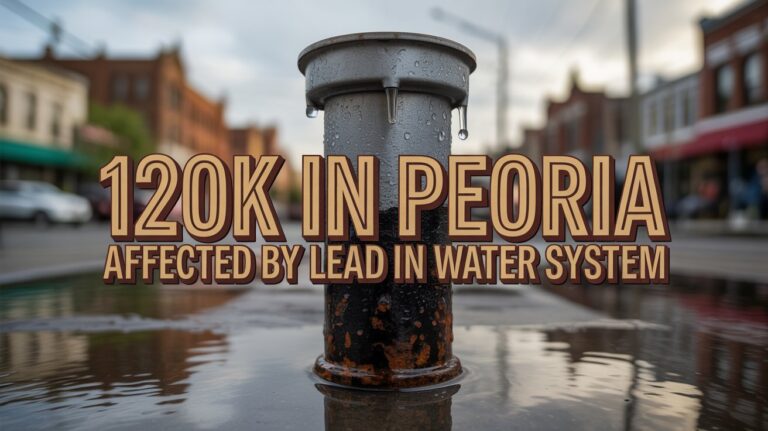Is Reverse Osmosis Effective in Removing Lead?
Wondering if reverse osmosis can effectively remove lead from your drinking water? You’re not alone. Many homeowners are increasingly concerned about the contaminants lurking in their tap water, and lead is often at the top of that list. In this article, we’ll explore how reverse osmosis systems work and whether they are a reliable solution for lead contamination in your home. By the end, you’ll have a clearer understanding of whether this purification method is the right fit for your needs.
“Lead is a potent neurotoxin that can have serious health effects, particularly in children. Ensuring your water is free from lead is crucial for maintaining your family’s well-being.” – National Water Quality Association
Let’s dive in and find out.
Understanding Reverse Osmosis: The Basics
Reverse osmosis involves pushing water through a semipermeable membrane, which traps contaminants and allows clean water to pass through. This process is effective in removing a broad spectrum of impurities, from common minerals to various toxic substances.
One of the most notable contaminants that reverse osmosis can target is lead, a heavy metal that poses significant health risks. Lead contamination in drinking water can originate from old pipes, solder, and fixtures. Even trace amounts of lead can be harmful, especially to children and pregnant women.
The mechanism behind reverse osmosis makes it highly proficient at reducing lead content. In RO systems, multiple stages of filtration work together to ensure that nearly 99% of lead particles are removed from the water. These systems typically include a pre-filter to eliminate larger debris, the semipermeable membrane for finer filtration, and often a post-filter to catch any remaining contaminants.
Given its effectiveness, reverse osmosis has been adopted by numerous households across the United States. Not only does it help in making tap water safer for consumption, but it also provides peace of mind, knowing that the water you’re drinking is devoid of harmful pollutants.
How Lead Contaminates Drinking Water
Lead contamination in drinking water is a serious and persistent issue. Old plumbing systems, especially those constructed with lead pipes, solder, or fixtures, are the primary culprits. As these materials corrode over time, lead particles leach into the water supply, posing significant health risks.
Why is lead so problematic? Unlike other contaminants, lead dissolves easily and remains undetectable to human senses, meaning you can’t see, taste, or smell it. This makes regular testing crucial to ensuring the safety of your drinking water.
Even low levels of lead exposure can have severe health consequences. For children, it can affect brain development, reduce IQ, and cause behavioral problems. Adults face risks such as hypertension, kidney damage, and reproductive issues. Because the human body cannot effectively remove lead, even small daily intakes can accumulate over time, leading to chronic poisoning.
Understanding the pathways of lead contamination helps you take proactive measures. Authorities have established regulations and guidelines aimed at reducing exposure by replacing old lead pipes and mandating stringent water quality standards. However, individual actions, such as installing a reliable filtration system like reverse osmosis, can offer additional protection.
Reverse Osmosis vs. Other Filtration Methods for Lead Removal
When it comes to protecting your household from lead contamination, understanding the differences between filtration methods is crucial. Reverse osmosis stands out among several water purification techniques for its effectiveness in removing lead. However, how does it compare to other common filtration methods?
Activated Carbon Filters: Activated carbon filters are widely known for their ability to remove certain chemicals, including chlorine and organic compounds, providing improved taste and odor. Yet, their efficiency in eliminating heavy metals like lead is limited. Unlike reverse osmosis, carbon filters may not adequately address dissolved lead, posing a risk if you rely solely on this method.
Distillation: Another method to consider is distillation, which involves boiling water to produce steam and then condensing it back into liquid form, thereby leaving contaminants behind. While distillation can remove lead effectively, it’s often slow and energy-intensive. Plus, it can strip beneficial minerals from your water, making it less preferable compared to reverse osmosis.
Ion Exchange: Ion exchange filters work by exchanging ions between the filter material and contaminants in the water. These filters are particularly effective for water softening by removing calcium and magnesium. When it comes to lead, however, their removal capacity may not be as high as reverse osmosis systems, and regular maintenance can be a hassle.
Comparing the Efficacy: Consider the removal rate: reverse osmosis systems can eliminate up to 99% of lead, significantly higher than most other filtration techniques. This high level of purification is due to the multi-stage process, which often includes pre-filters for sediment and activated carbon, followed by the semi-permeable RO membrane that blocks even the smallest particles of lead.
In conclusion, while there are several methods available for water filtration, reverse osmosis is particularly renowned for its high efficacy in removing lead. It combines multiple filtration stages to ensure comprehensive removal of contaminants, making it a reliable choice for households looking to safeguard their drinking water.
Real-World Effectiveness: Case Studies and Research
When it comes to the real-world effectiveness of reverse osmosis (RO) systems in removing lead, several case studies and research findings stand out. In many communities where traditional filtration methods failed to bring down lead levels to safe limits, RO systems have made a significant difference. Let’s take a closer look at some compelling examples.
For instance, in Flint, Michigan—a city that unfortunately became synonymous with lead-contaminated water—local households who installed reverse osmosis systems reported a dramatic reduction in lead levels. Extensive testing and community feedback highlighted that these systems consistently delivered water with lead concentrations well below the EPA’s action level of 15 parts per billion (ppb).
Research studies also lend strong support to these anecdotal reports. A study published in the Journal of Environmental Science and Health evaluated various filtration methods and found that reverse osmosis was one of the most effective in removing lead from drinking water. In this study, RO systems achieved lead removal efficiencies exceeding 99%, showcasing their unparalleled capability in addressing lead contamination.
Beyond the reduction of lead, RO systems are praised for their multi-contaminant removal capabilities. For example, these systems have also proven effective in removing PFAS (per- and polyfluoroalkyl substances), a group of harmful chemicals commonly found alongside lead in contaminated water supplies. This dual action adds another layer of security, particularly for communities dealing with multiple contamination issues.
It’s important to consider both the initial cost and ongoing maintenance when evaluating the real-world application of RO systems. While the upfront investment and maintenance might be higher compared to some other methods, the significant health benefits and peace of mind they bring often justify the expense. Many users find that the cost of a reliable RO system is a small price to pay for clean, safe drinking water.
Ultimately, the body of evidence underscores that reverse osmosis systems are not only theoretically effective but also reliably efficient in practical applications. However, it’s always advisable to periodically test your water, even with an RO system installed, to ensure it continues to offer optimal protection against lead and other contaminants.
Reverse osmosis systems can also remove other contaminants such as arsenic, nitrates, and pesticides
Cost Analysis: Is Reverse Osmosis Worth the Investment?
Evaluating the costs of a Reverse Osmosis (RO) system requires considering both the initial investment and the ongoing maintenance. On the surface, the price of a home RO system can vary widely, ranging from as low as $150 for a basic under-sink model to over $1,000 for more sophisticated, whole-house systems. However, don’t let sticker shock deter you just yet. The initial expense is just one piece of the puzzle.
The ongoing maintenance costs for a Reverse Osmosis system are relatively low. Regular filter changes, which are essential to maintaining the system’s effectiveness, typically cost around $50 to $100 annually. These systems also require periodic cleaning and occasional part replacements, but these additional costs are usually minimal.
Now, let’s compare these costs to other water filtration options. Activated carbon filters are cheaper upfront but tend to need more frequent replacements, which can add up over time. Bottled water might seem convenient, but continuously purchasing it is neither cost-efficient nor environmentally friendly in the long run.
Moreover, investing in an RO system can have indirect financial benefits. For households using water for cooking, pet care, or specialized health needs, the high-quality filtered water can lead to less wear on appliances, fewer health issues, and better-tasting food and beverages. This can translate into savings on medical bills, appliance repairs, and even grocery costs.
Given the environmental and health benefits, along with the long-term savings, Reverse Osmosis systems often prove to be worth the initial investment. While the upfront cost may seem significant, the peace of mind that comes with knowing your water is free from harmful contaminants like lead is priceless. Plus, many homeowners find that the switch leads to improved water quality throughout their home—and that’s an investment in your family’s health and well-being.
Initial installation costs for reverse osmosis systems can range from $200 to $500
Conclusion
Choosing the right water filtration system is crucial for safeguarding your health. With its proven ability to effectively remove lead and other contaminants, reverse osmosis stands out as a powerful solution. By understanding both its benefits and limitations, you can make an informed decision tailored to your needs.
While some may consider the initial investment and maintenance costs to be a drawback, the protection and peace of mind it offers are invaluable. Compared to other filtration methods, reverse osmosis provides a higher level of purification, ensuring that your drinking water is less likely to contain harmful substances like lead, chlorine, and VOCs.
Moreover, beyond the health benefits, opting for a reverse osmosis system can also be an environmentally friendly choice. It reduces your reliance on bottled water, helping to cut down on plastic waste and preserve natural resources. Despite the wastewater generated during the process, many systems have become more efficient, making them a sustainable option.
In conclusion, reverse osmosis is not just effective in removing lead but also in enhancing overall water quality. With careful consideration of the associated costs and benefits, investing in this technology can offer long-term health benefits and contribute to a healthier environment. Whatever your decision, ensuring access to clean and safe drinking water should always be a top priority.
Frequently Asked Questions
How does reverse osmosis compare to other lead removal methods?
When it comes to lead removal, several methods vie for attention. Understanding how reverse osmosis (RO) stacks up against these alternatives can help you make an informed decision for your home or business.
One common method is using activated carbon filters. These filters are effective at reducing lead levels, but their efficiency may not match that of RO systems, which can remove up to 99% of lead from water. Activated carbon works by adsorbing contaminants onto a granular surface, which means its effectiveness can vary based on water chemistry and flow rate.
Cation exchange filters are another alternative. These systems replace lead ions in the water with less harmful ions like sodium. While effective, they may not always be practical for reducing lead to safe levels, especially in water with high concentrations of contaminants.
Compared to these, RO systems utilize a semi-permeable membrane that filters out lead and a wide range of other contaminants. This makes it a more comprehensive solution. Additionally, RO systems often include pre-filters and post-filters—like activated carbon filters—adding an extra layer of purification.
Distillation is also noteworthy. By boiling water and capturing the steam, distillation can remove lead. However, the energy consumption and time requirements are significant drawbacks, especially compared to the more energy-efficient and quicker RO systems.
It’s essential to recognize that while each method has its merits, reverse osmosis stands out for its high efficiency, versatility, and ability to handle large volumes of water.
Are there any drawbacks to using reverse osmosis for lead removal?
While reverse osmosis (RO) is undoubtedly effective in removing lead and a host of other contaminants, it’s not without its drawbacks. One of the primary concerns users face is the initial cost and maintenance of the system. RO systems can be more expensive than other filtration methods, with costs including installation and regular replacement of filters and membranes.
Another point to consider is water wastage. RO systems are known for producing a significant amount of wastewater—typically, for every gallon of purified water, several gallons are discarded. This not only impacts your water bill but also raises environmental concerns.
Additionally, reverse osmosis systems remove beneficial minerals from water along with harmful contaminants. This means essential minerals such as calcium and magnesium also get filtered out, potentially leading to the need for mineral supplements or re-mineralization of the filtered water.
Some users also report a reduction in water pressure when using an RO system. The multi-stage filtration process can slow down the flow of water, which may be inconvenient for some households.
Finally, it’s worth mentioning that despite their efficacy, RO systems require ongoing maintenance to ensure they continue to function correctly. Filters and membranes need to be replaced periodically, and neglecting this can result in reduced performance and even contamination of your water supply.
In summary, while reverse osmosis is highly effective at lead removal, it’s important to weigh these potential drawbacks against the benefits to determine if it’s the right solution for your specific needs.
Does reverse osmosis waste a lot of water?
When it comes to water use, reverse osmosis (RO) systems do have a bit of a drawback. They are known to produce a fair amount of wastewater. For every gallon of purified water produced, an average RO system can waste three to four gallons of water. This is due to the nature of the filtration process, which flushes out contaminants and impurities, resulting in what is known as “reject water.”
However, advancements in technology are continuously improving the efficiency of RO systems. High-efficiency units are now available, which can reduce the wastewater ratio to closer to 1:1, meaning one gallon of wastewater for each gallon of purified water. Such systems tend to cost more upfront but can be a worthwhile investment, especially in areas where water conservation is a priority.
Additionally, some users find creative ways to repurpose the reject water. It can be used for irrigation, toilet flushing, or even for washing dishes or clothes, provided it doesn’t contain harmful chemicals for these purposes. By utilizing the wastewater effectively, you can minimize the environmental impact and make the most out of your RO system.
Ultimately, whether or not the water waste is a significant concern will depend on your specific needs and priorities. If reducing lead and other contaminants in your drinking water is a high priority, the water waste might be a reasonable trade-off. However, if water conservation holds more weight, you might want to consider high-efficiency models or alternative filtration methods that produce less waste.



